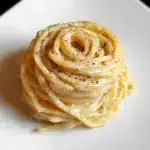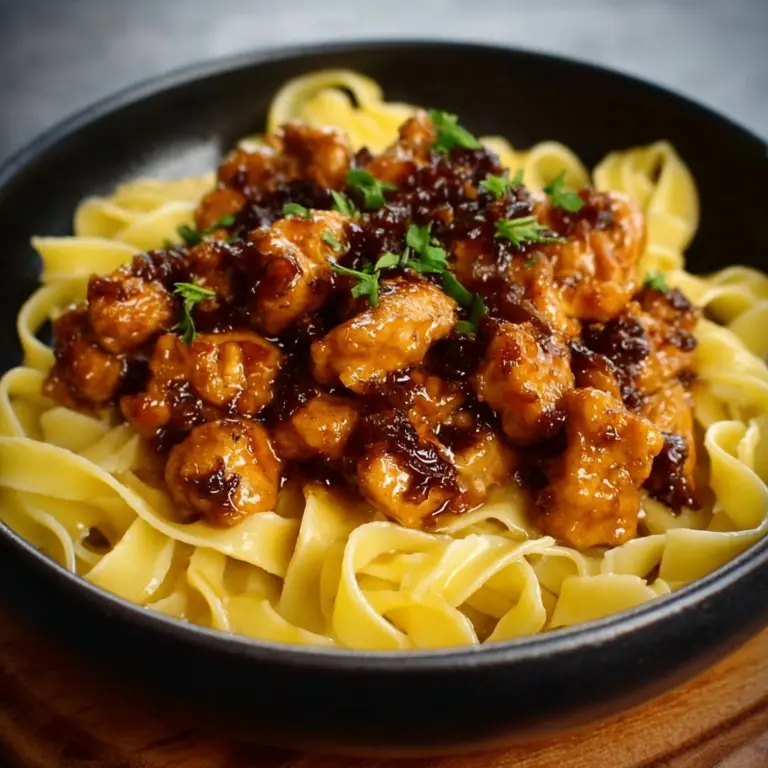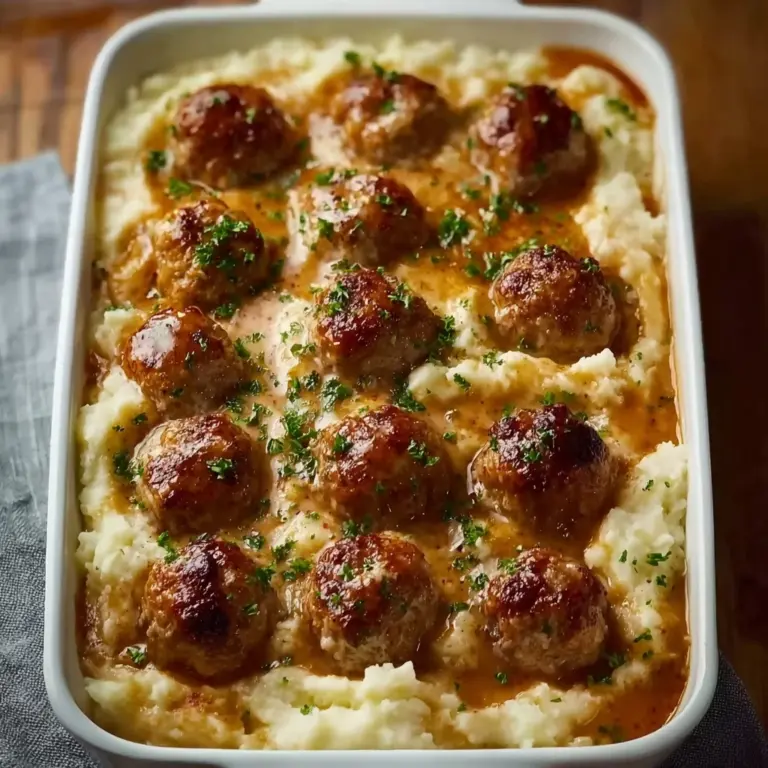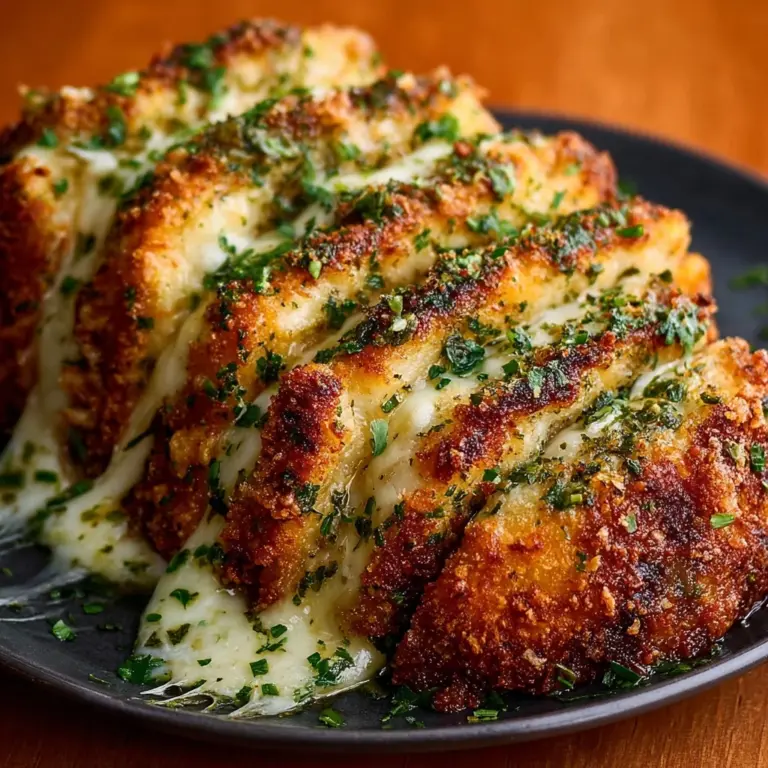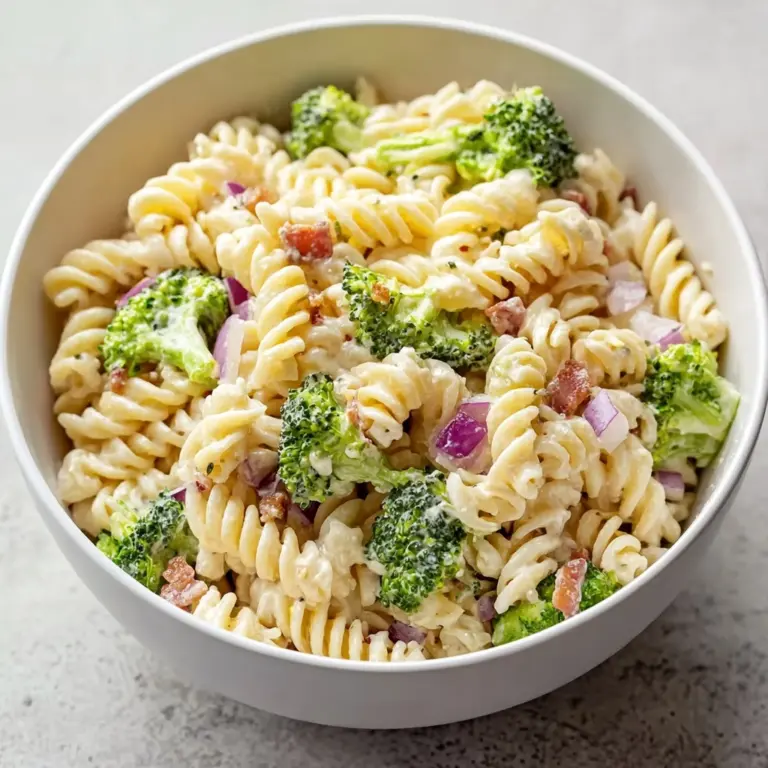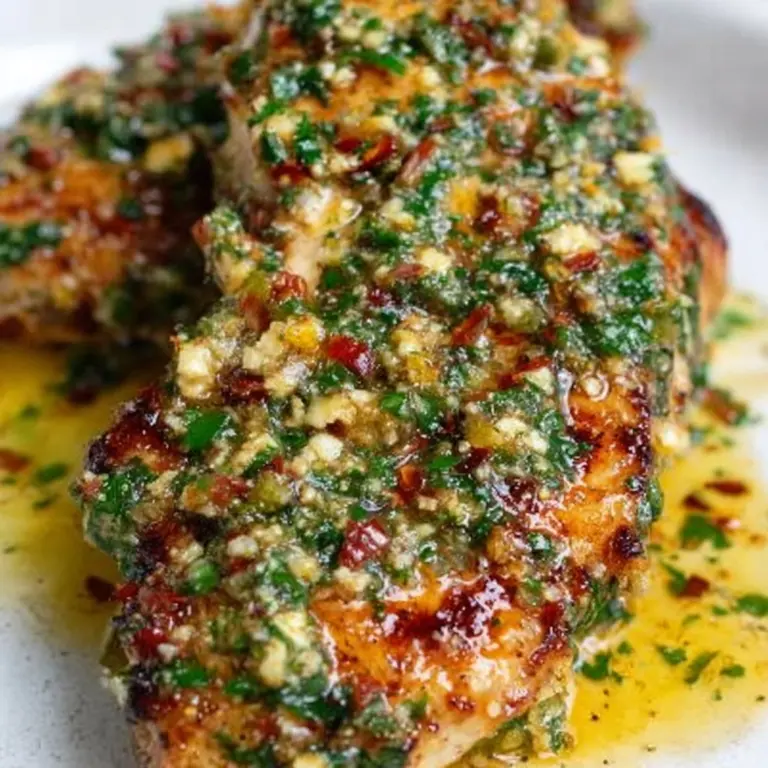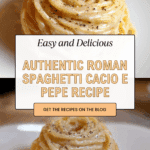How to make Spaghetti Cacio e Pepe like a Roman Recipe
Craving a true taste of Rome? Let me walk you through how to make Spaghetti Cacio e Pepe like a Roman—a dish that’s much more than the sum of its parts! This legendary pasta doesn’t just satisfy your hunger; it seduces your senses with its creamy, cheesy sauce and a kick of aromatic black pepper. Get ready to discover why three humble ingredients can be pure magic on your plate.
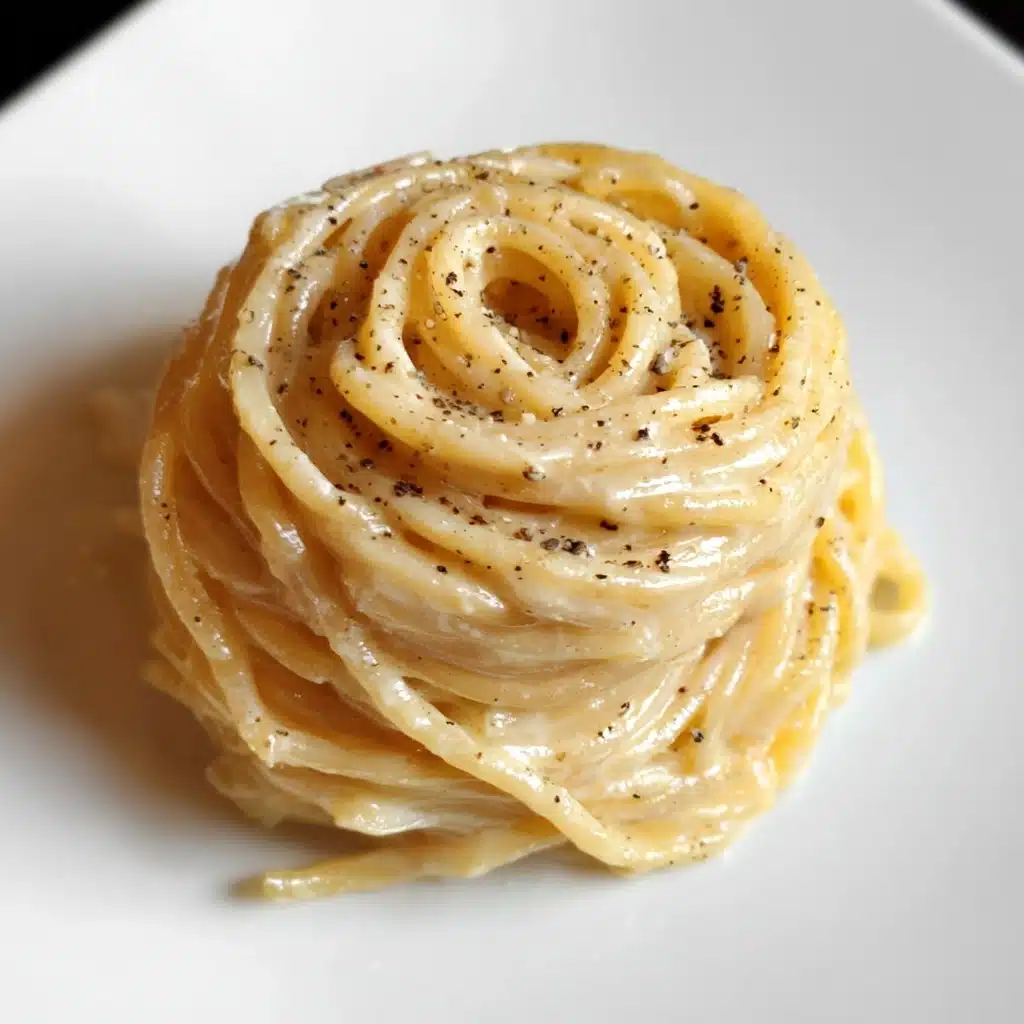
Ingredients You’ll Need
Simple never means boring—especially when every ingredient pulls its weight! These are the pillars of flavor, texture, and lusciousness in this Roman classic. Don’t skimp or substitute if you want the real deal.
- Spaghetti (or Tonnarelli): 400 grams are ideal; if you can find Tonnarelli, go for it—its rough surface clings to the luscious sauce beautifully.
- Pecorino Romano Cheese: Shoot for 200-250 grams of high-quality, well-aged cheese; its salty, sharp punch and perfect melt are essential.
- Black Pepper: Freshly cracked is non-negotiable; you want a muscular, spicy aroma that infuses every bite.
- Coarse Salt: Just a touch to season the pasta water—remember, Pecorino brings its own salty richness.
How to Make How to make Spaghetti Cacio e Pepe like a Roman
Step 1: Grate the Pecorino Romano
This step can be meditative—take your time finely grating the cheese, because the smaller the pieces, the silkier your sauce will become. Finely grated Pecorino dissolves seamlessly into the pasta, which is the secret to that dreamy, creamy texture.
Step 2: Boil the Pasta Water
Grab your tallest pot and fill it no more than ¾ full—this keeps your pasta from sticking and allows it to dance freely. Remember the golden ratio: for each 100 grams of pasta, use 1 liter of water and 10 grams of salt. For Cacio e Pepe, only use half that salt; the cheese brings plenty!
Step 3: Cook Your Pasta
Toss your spaghetti (or Tonnarelli!) into the boiling, salted water. Stop cooking just before al dente—about a minute or two early. This ensures the pasta finishes perfectly in the sauce and soaks up all those flavors. The starchy water it boils in will soon become liquid gold.
Step 4: Warm Your Serving Bowl
While your pasta cooks, place a beautiful bowl over the simmering pot to gently warm. This quirky Roman trick keeps everything steamy and helps the cheese melt luxuriously, so your Cacio e Pepe sauce can reach full glory.
Step 5: Reserve Some Pasta Water
Before you drain the pasta, scoop out a ladleful (or two) of that cloudy, starchy water. This is your magic emulsifier. It’s what gives how to make Spaghetti Cacio e Pepe like a Roman its signature, glossy creaminess—no cream needed!
Step 6: Toss Pasta with Cheese and Water
Drain the pasta and slide it into the warmed bowl. Sprinkle in the grated Pecorino Romano and splash in the reserved pasta water, tossing everything vigorously with tongs. The cheese and water will unite into a silky, love-the-bowl sauce. Adjust with more cheese if it’s watery, or more water if it’s dry. The transformation is magical!
Step 7: Season and Serve
Finish with a heavy-handed shower of freshly cracked black pepper and another good toss. You want every strand slick with creamy cheese and peppery bite. There—now you truly know how to make Spaghetti Cacio e Pepe like a Roman!
How to Serve How to make Spaghetti Cacio e Pepe like a Roman
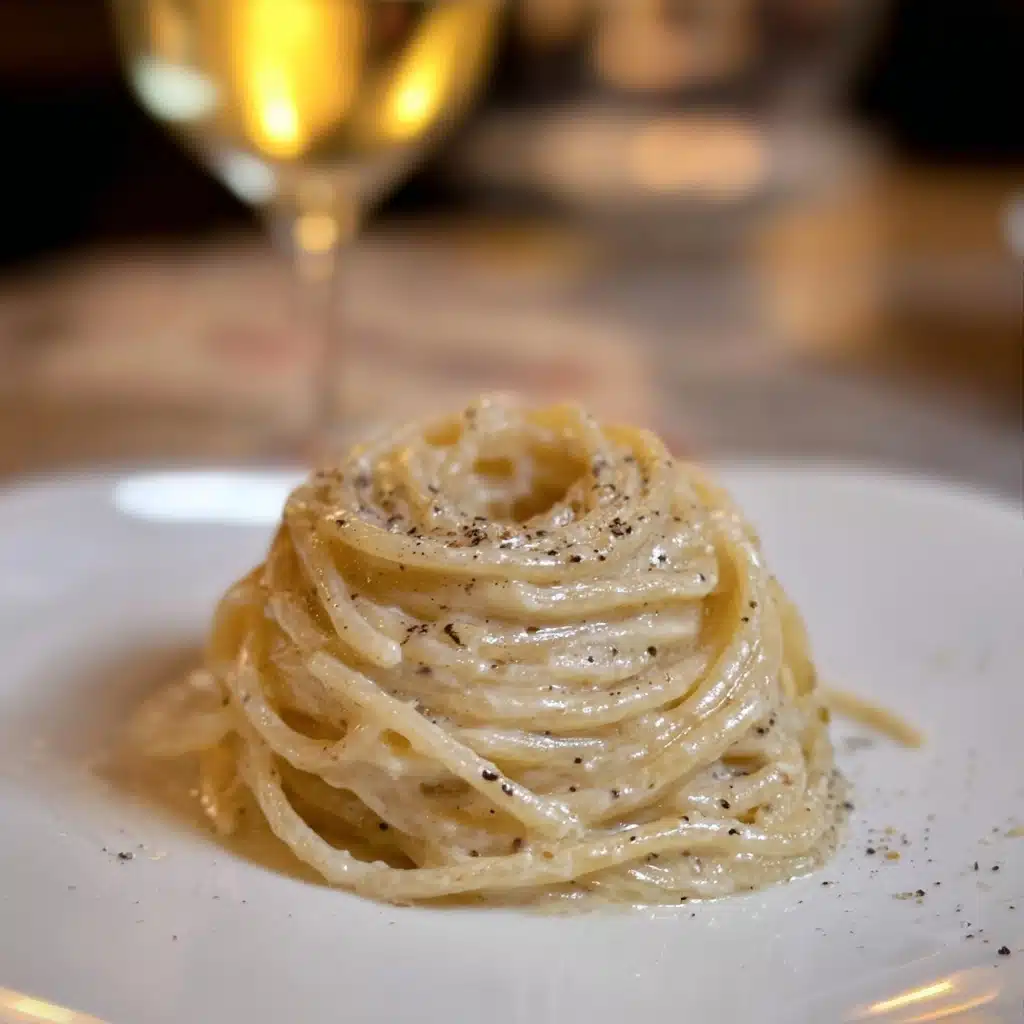
Garnishes
This dish shines brightest in its simplicity, but an extra scattering of grated Pecorino Romano and a last twist of fresh black pepper right at the table elevate each plate from delicious to unforgettable. Serve steaming hot for maximum melt and aroma.
Side Dishes
The beauty of how to make Spaghetti Cacio e Pepe like a Roman is that it truly holds the spotlight. If you want to round out your meal, consider a crisp arugula salad with lemon, some olive-oil-brushed focaccia, or classic Roman-style artichokes. Let the pasta be the star!
Creative Ways to Present
If you’re looking to impress, try serving the pasta twirled into little nests or nests mounded onto warmed plates. Feeling playful? A big black pepper grinder at the table invites each guest to add their own aromatic flourish, and even a drizzle of good olive oil can be a fun finishing touch for adventurous palates.
Make Ahead and Storage
Storing Leftovers
Ideally, Cacio e Pepe is best enjoyed fresh, but if you end up with leftovers, transfer them to an airtight container as soon as possible. The sauce will set slightly as it cools, but a quick fix will revive it.
Freezing
While you can technically freeze how to make Spaghetti Cacio e Pepe like a Roman, the sauce can separate and become grainy. It’s truly one of those dishes that rewards you for eating it straight away. If you must freeze, wrap portions tightly and thaw gently in the fridge.
Reheating
To bring leftovers back to life, add a splash of hot water before reheating in a pan over gentle heat, stirring well to loosen the sauce. Resist the microwave if you can, as it tends to dry out the pasta and cheese. A few drops of extra pasta water or even milk can help restore creaminess.
FAQs
Can I use Parmesan instead of Pecorino Romano?
Pecorino Romano is traditional and gives that sharp, salty, tangy character. Parmesan will work in a pinch, but you’ll lose the unique Roman flavor. If you want to know how to make Spaghetti Cacio e Pepe like a Roman, stick with Pecorino!
Is it necessary to use freshly cracked black pepper?
Absolutely! Pre-ground pepper lacks the pungency and aroma that define this dish. Freshly ground black pepper infuses the pasta with bold, aromatic heat you won’t want to miss.
Why did my sauce turn out clumpy?
Clumps can happen if the cheese is added to pasta that’s too hot or too cold, or if it isn’t finely grated. Warming the bowl and gradually adding cheese with starchy water while tossing will give you a smooth, glossy sauce every time.
What kind of pasta works best?
Tonnarelli is the Roman classic, but spaghetti is a perfectly delicious alternative. The key is using pasta with enough texture to grab the sauce, so avoid superfine varieties if possible.
How do I adjust the level of salt?
Because Pecorino Romano is quite salty, be sparing with the salt you add to the pasta water. Taste your cheese, add half the usual salt, and always taste as you go. This simple tweak ensures a perfectly balanced dish.
Final Thoughts
If you’ve ever dreamed of a quick trip to Rome at dinnertime, now you know how to make Spaghetti Cacio e Pepe like a Roman—from your own kitchen! With a handful of perfect ingredients and a few smart techniques, you’ll find this classic is even better than the sum of its parts. So grab your cheese, twist that pepper mill, and treat yourself to a twirl of pure Roman joy!
PrintHow to make Spaghetti Cacio e Pepe like a Roman Recipe
Learn how to make the authentic Roman dish, Spaghetti Cacio e Pepe, with simple ingredients and classic techniques. This recipe guarantees a creamy and flavorful pasta dish that will transport you to Italy with every bite.
- Prep Time: 10 minutes
- Cook Time: 15 minutes
- Total Time: 25 minutes
- Yield: 4 servings 1x
- Category: Main Course
- Method: Boiling, Tossing
- Cuisine: Italian
- Diet: Vegetarian
Ingredients
400 grams of Spaghetti (Tonnarelli if available)
- About 200–250 grams of high-quality Pecorino Romano cheese
- Black pepper to taste (freshly ground)
- Coarse salt
Instructions
- Grate Pecorino Romano cheese. In a tall pot, bring water to a boil.
- Add salt to boiling water. Use half the usual amount due to the cheese’s saltiness.
- Cook pasta al dente.
- Heat a serving bowl on top of the pot.
- Reserve pasta water using a ladle.
- Drain pasta and transfer to the heated bowl.
- Add Pecorino Romano cheese and water gradually.
- Toss until creamy consistency.
- Adjust with more cheese or water as needed.
- Season with black pepper and toss.
Notes
- Use high-quality ingredients for the best flavor.
- Adjust salt carefully due to the cheese’s saltiness.
- Ensure the serving bowl is heated for a creamy sauce.
Nutrition
- Serving Size: 1 serving
- Calories: 430 kcal
- Sugar: 1g
- Sodium: 900mg
- Fat: 15g
- Saturated Fat: 9g
- Unsaturated Fat: 5g
- Trans Fat: 0g
- Carbohydrates: 55g
- Fiber: 3g
- Protein: 18g
- Cholesterol: 40mg
Keywords: Spaghetti Cacio e Pepe, Roman pasta recipe, creamy pasta, Pecorino Romano cheese, Italian cuisine

